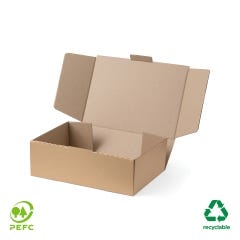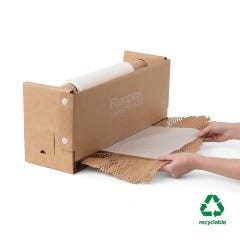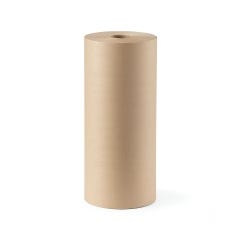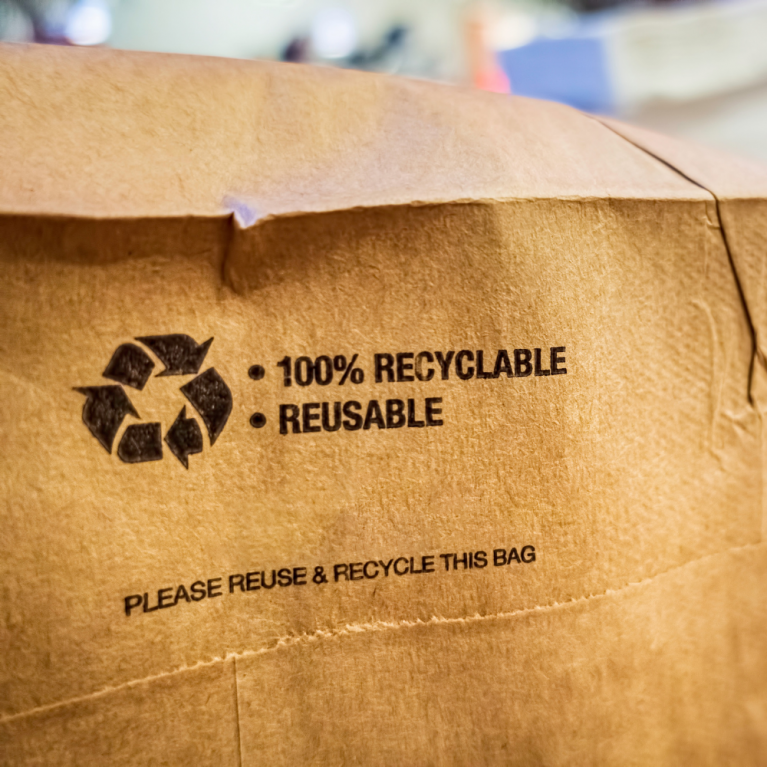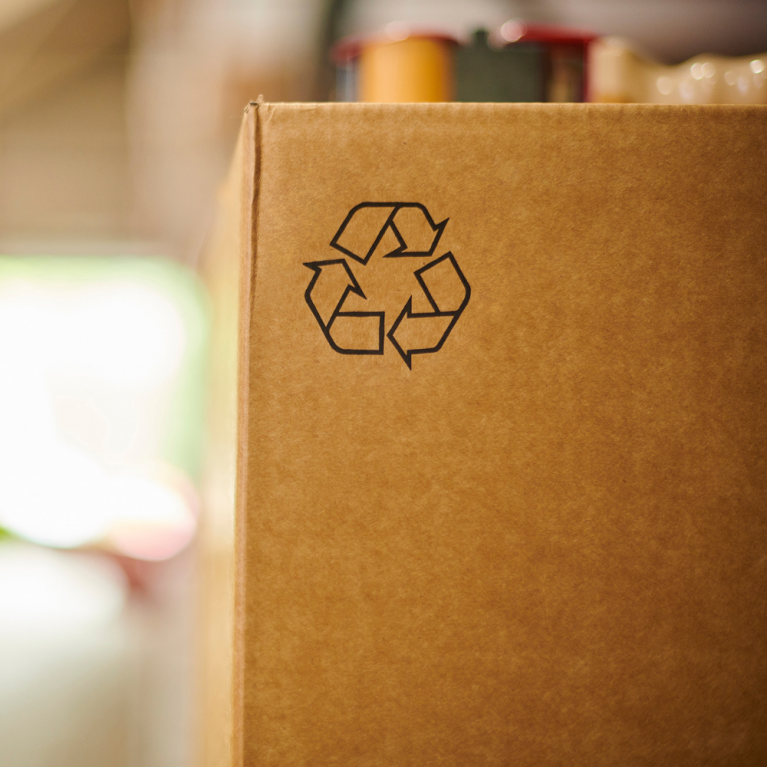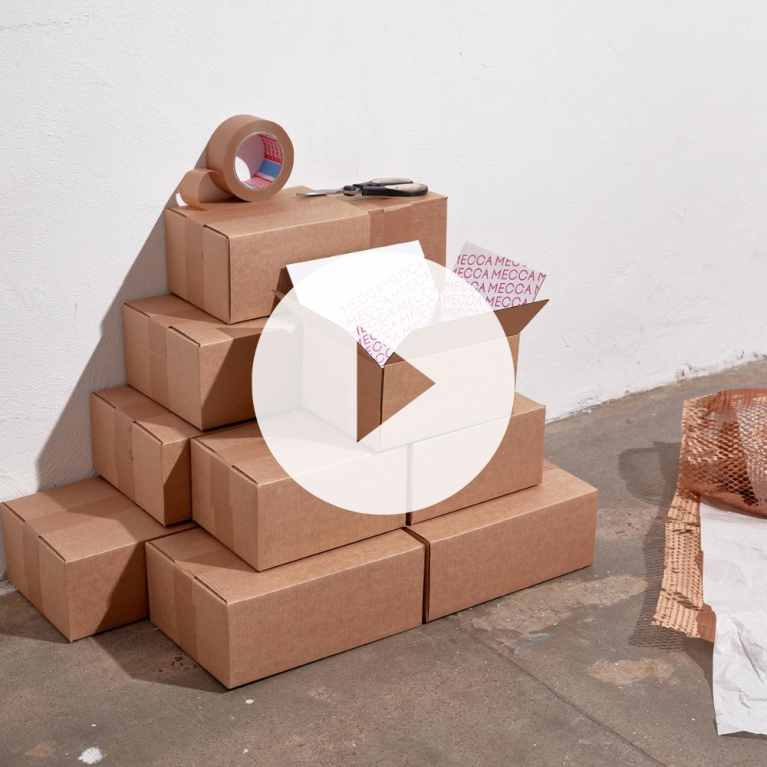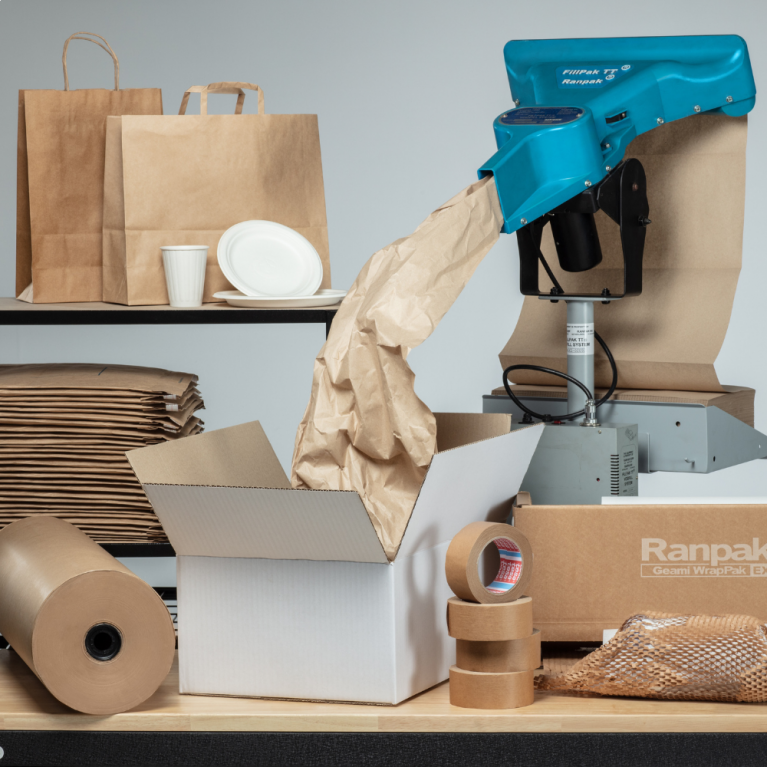
If you thought remembering your eco-friendly bags at the supermarket was hard enough, we are now faced with a new challenge.
There is an ever-growing list of sustainable terms that have become buzzwords in our eco-conscious society and are being used to define eco-friendly packaging.
Biodegradable. Compostable. Recyclable. These guys are the MVPs of sustainable practices and the most utilised when referring to eco-friendly packaging. While all three play an important part in helping to reduce waste, each holds a very different meaning.
Below we have simplified these sustainable terms and busted some common myths surrounding them, so you can get back to doing your part as an eco-warrior, like remembering your reusable coffee cup.
Recyclable
Recycling is the process of converting waste into reusable material, therefore keeping it away from landfill for longer.
Cardboard and paper packaging are a quick recycling win, but when it comes to plastic, it becomes more complicated. Last year only a third of Australia’s plastic packaging was recycled, meaning that over 600,000 tonnes, or the equivalent of 85,714 thousand elephants, were not recycled. With seven different types of plastic packaging, each with their individual recycling specifications and hundreds of recycling labels in the market, it can be hard to make the right choice when it comes to recycling.
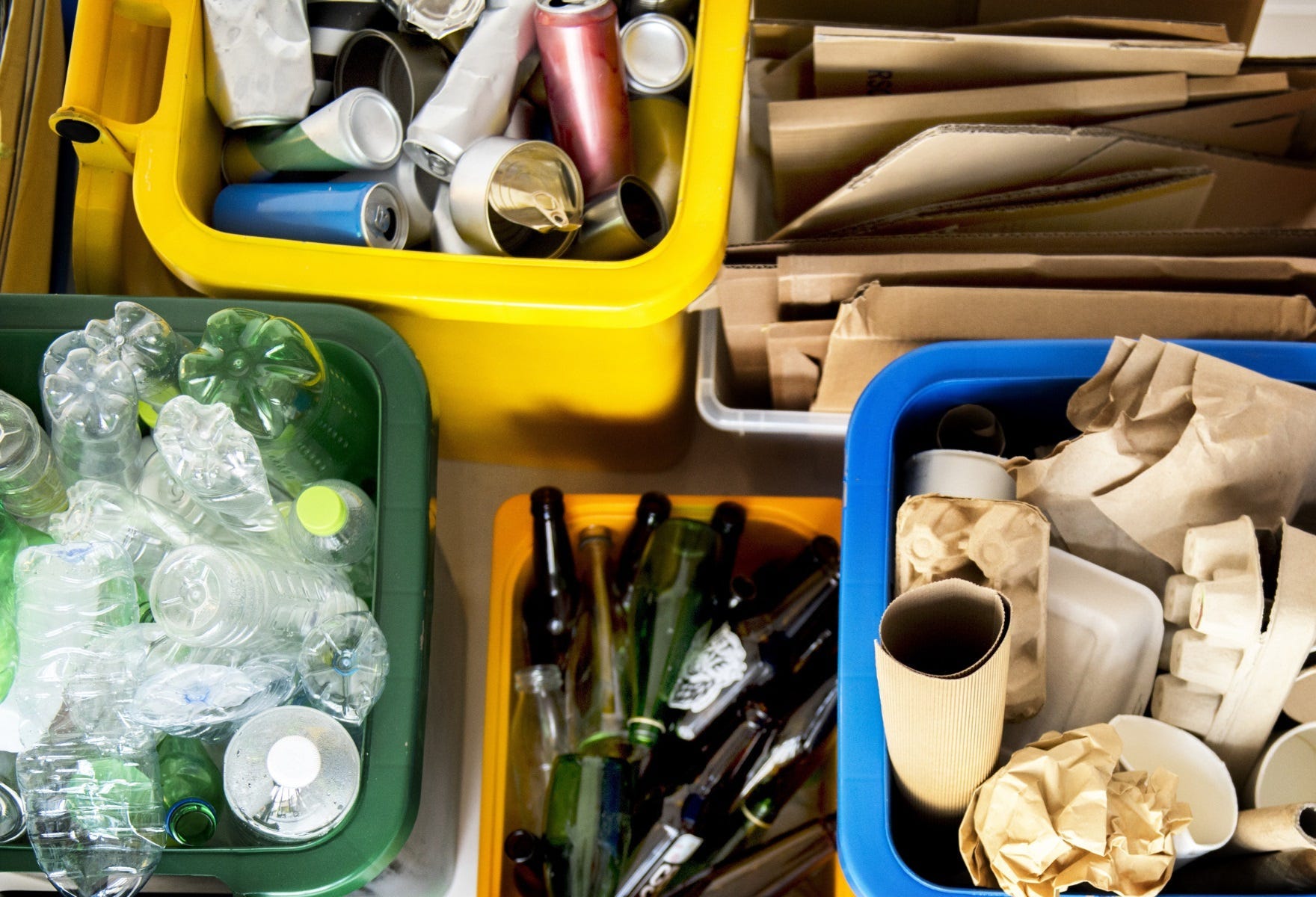

Australian Recycling Label
The Australian Packaging Covenant Organisation realised that there was customer confusion around how to correctly recycle different types of packaging and have aimed to simplify the process by introducing the Australasian Recycling Label (ARL).
The ARL helps consumers make better recycling decisions by providing clear information around how to correctly dispose of each component of a product’s packaging.
Many products have different packaging components and each of these may require different disposal methods. Some packaging components may need to be disposed directly into a rubbish bin, while other components may either be recycled through standard recycling channels or be conditionally recycled after special instructions have been carried out (removing food scraps from a cardboard pizza box).
See below an example of the ARL logo for a container of yoghurt. The lid of the container is not considered recyclable, while the tub is recyclable. The foil can be recycled once an instruction is carried out; in this case, the foil is scrunched into a ball.
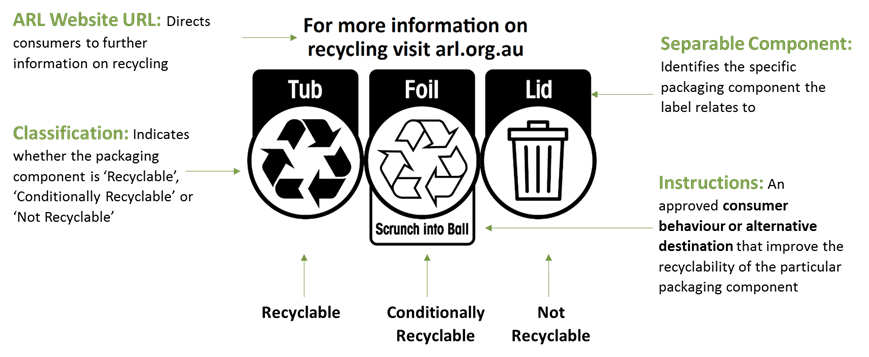

Internally, removing single-use plastics such as cutlery and cups, educating employees on the types of packaging materials that can be recycled, and setting up recycling bins around your workplace can create a quick win for companies recycling initiatives.
Biodegradable
If an item of packaging is biodegradable, it means that it can be broken down naturally by microorganisms under certain conditions. However, unlike compostable products that have a breakdown time limit, there are currently no measures around the time or extent of degradation that a product meets to be classified as Biodegradable.
While considered an eco-friendly solution to their traditional plastic counterpart some biodegradable plastic packaging does leave behind small plastic particles when broken down into the earth which takes some time to dissolve and can still be harmful to the environment.
The term 'biodegradable' can be used on items that biodegrade down to microplastics, as well as those that biodegrade down to compost. In any instance, it is better for the environment to select products that biodegrade to compost.
Compostable
While biodegradable and compostable packaging both intend to break down back into the earth, compostable packaging takes it one step further and provides the earth with nutrient-dense bioproduct that can support plant growth.
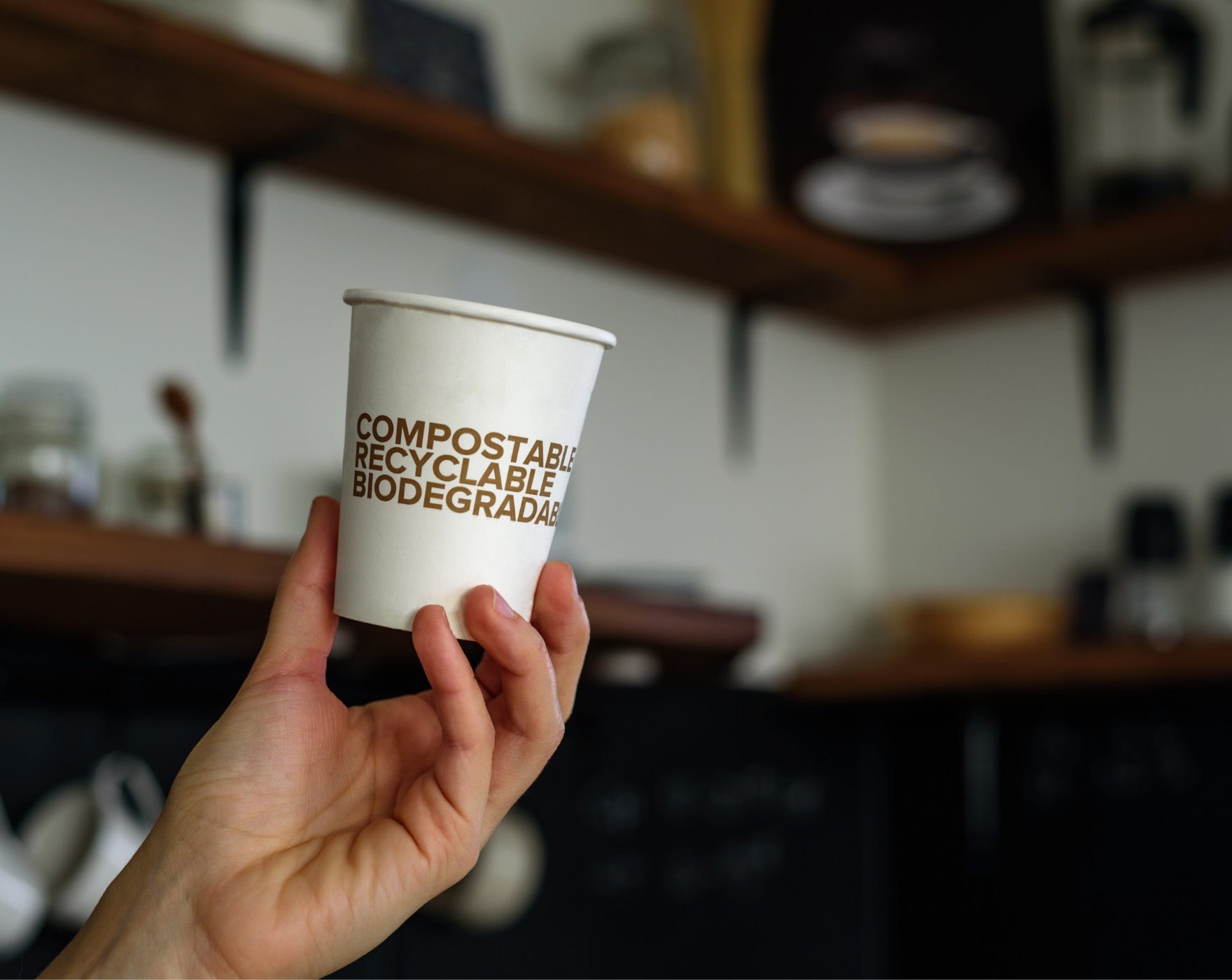

Unlike biodegradable items, compostable items must also break down within a specific time period of 90-180 days and leave no product residue behind. It is important to remember that all compostable items are classified as biodegradable, although not all biodegradable products are classified as compostable.
If an item of packaging is certified as compostable, it is not to be mixed with conventional plastics for recycling as some compostable plastics are considered a contaminant to the recycling stream.
Home Compostable vs Industrial Compostable
For packaging to be considered compostable, it must be certified to the Australian Standard - AS 4736: 2006 Biodegradable plastics suitable for composting and other microbial treatment (Australian Industrial Composting Standard). This means that the product can be composted when taken to an industrial and commercial-scale composting facility in Australia.
Unless your eco-friendly packaging product clearly states that it is home compostable, the item must be disposed of in a commercial composting facility that can treat the packaging at much higher temperatures and in controlled, less variable conditions than what can be achieved at home.
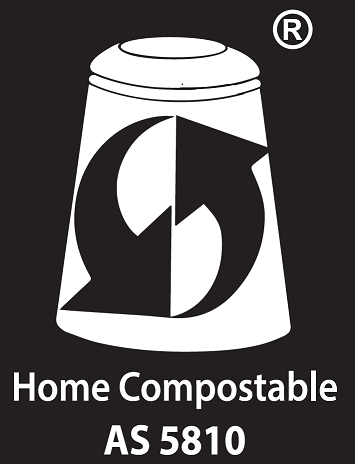

Home compostable items can be easily identified as they carry the home composting emblem which means they are certified to Australian Standard AS 5810: 2010 Biodegradable plastics suitable for home composting (Australian Home Composting Standard).
Home compostable packaging be marked with the Home Compostable standard certification and can be simply disposed of in the home compost bin along with your food and vegetable scraps.
Please ensure you read any further messaging on the packaging with regards to how to responsibly compost the packaging. For example, some home compostable packaging will ask consumers to cut off the adhesive strip and remove labels before composting.
Signet’s Eco Promise
At Signet, we are committed to providing our customers with environmentally friendly packaging solutions, that have minimal impact on the environment. As a signatory to the Australian Packaging Covenant, we are working towards the 2025 National Packaging Targets, which focus on sustainable material sourcing and manufacturing, right through to the end-of-life product disposal.
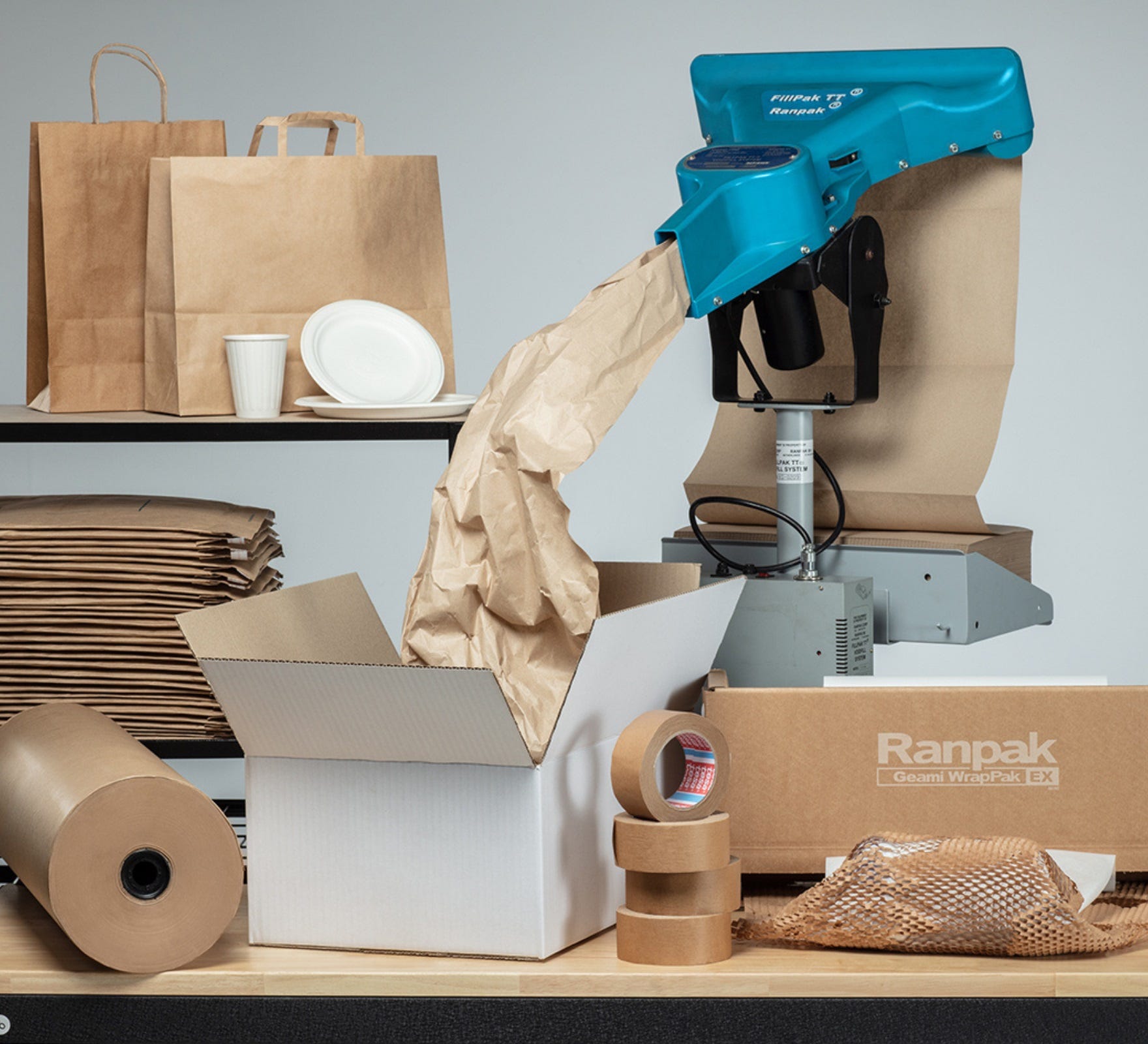

We’ve bundled our eco-friendly packaging products up into one place, so you can easily make sustainable choices that won’t cost the earth. To shop our range or read more articles like this visit signet.net.au/eco-friendly.



